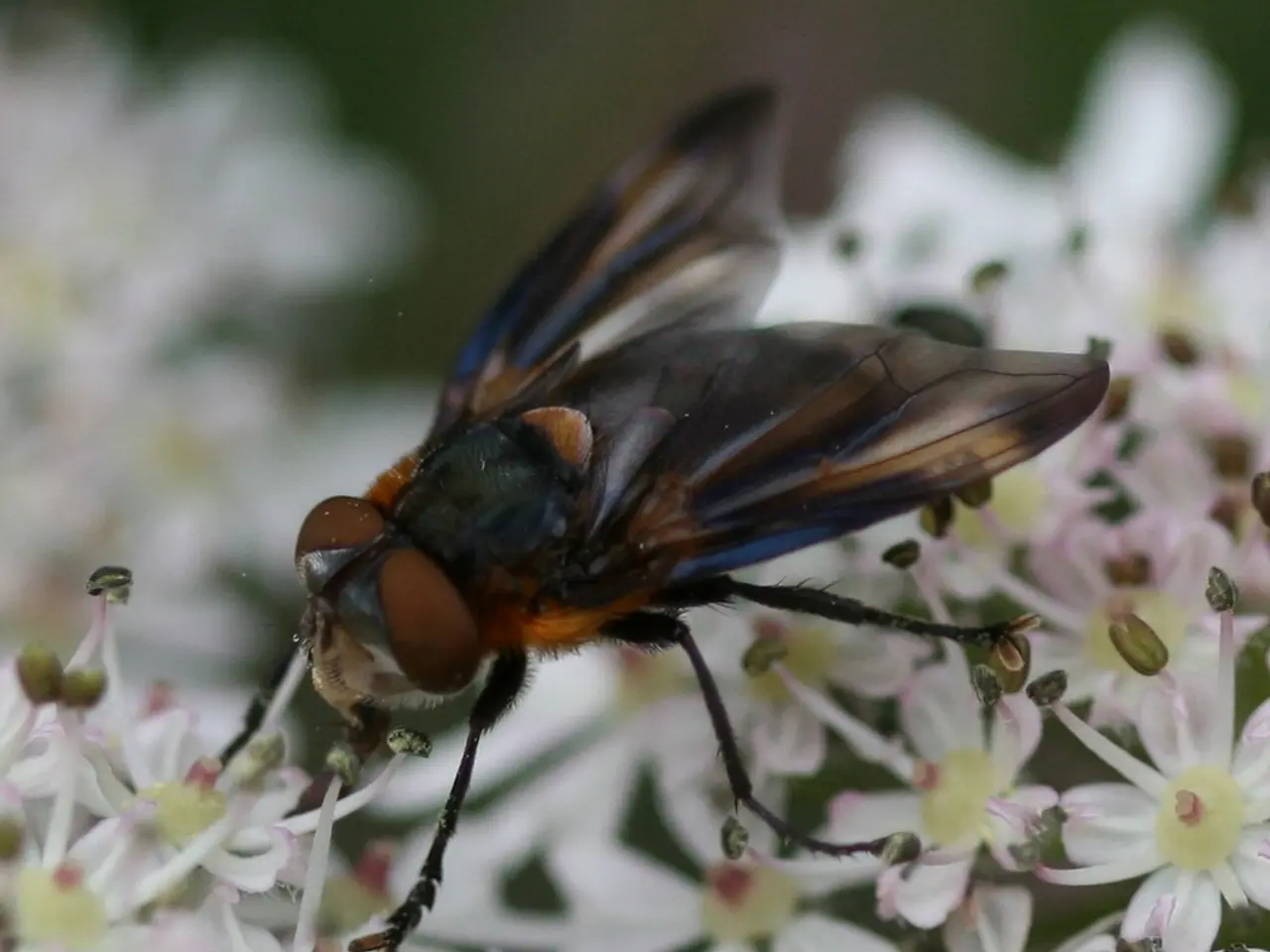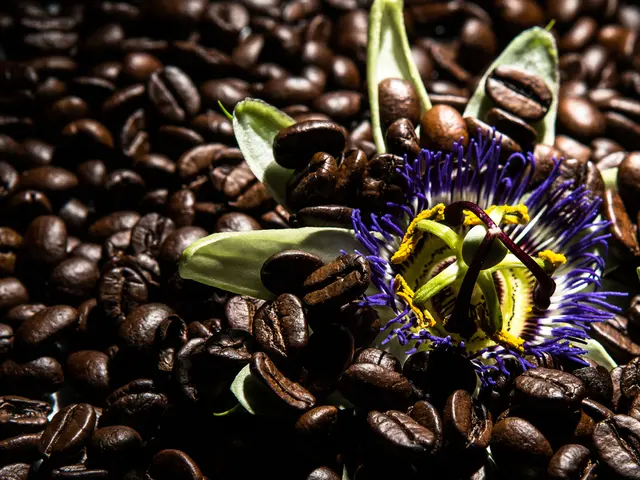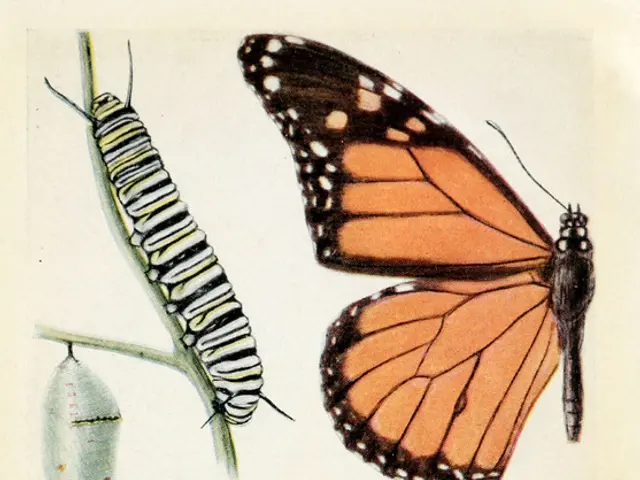Strategies for Deterring Flies on Horses from various Directions: Explore 6 Methods for Protection
In the equine world, flies can be a significant nuisance for both horses and their owners. This article offers an in-depth look at various methods to manage flies and keep them at bay, ensuring a more comfortable and healthy environment for your horse.
1. Fly Sprays
Fly sprays provide effective and immediate protection by killing and repelling a broad range of insects, including flies, mosquitoes, gnats, and ticks. Many formulations are water-resistant and long-lasting, sometimes up to 17 days with advanced technology (e.g., UltraShield EX). Convenient and easy to apply via spray bottles, fly sprays are a popular choice for many horse owners.
However, they usually need reapplication, especially after heavy rain or washing. Additionally, some horses may be sensitive or allergic to the chemicals in fly sprays. Moreover, they can be relatively expensive, especially premium or long-lasting formulas.
2. Fly Gels and Creams
Fly gels and creams offer targeted fly protection, making them suitable for horses sensitive to sprays or those with skin irritations. They are applied by hand or sponge for precise application and can be less widespread than sprays, reducing chemical exposure.
Despite their benefits, fly gels and creams can be more expensive compared to sprays. Over-application can also waste product and cause unnecessary chemical coverage. Application can be time-consuming and messy unless using roll-on or sponge applicators.
3. Fly Sheets
Lightweight, breathable mesh sheets known as fly sheets provide all-day, chemical-free protection, covering the horse’s body. White or light-colored sheets reflect heat and often include UV protection. Many designs offer full coverage for horses with sweet itch or sensitive skin. Preventing rubbing caused by scratching flies, fly sheets can reduce fly allergy issues.
However, fly sheets must fit correctly to avoid chafing or sores. They can be uncomfortable for horses in wet weather unless waterproof types are used, which can be warmer and less breathable. They may be unsuitable for horses prone to overheating.
4. Fly Masks
Fly masks protect the horse’s face, especially the eyes, from flies, which tend to congregate around sensitive facial areas. Available in multiple designs for different levels of coverage and ventilation, fly masks are generally well-tolerated.
Masks can become dirty quickly and need regular cleaning. Poorly fitting masks can rub or irritate the face. Limited protection to just the head area means that other parts of the horse may still be exposed to flies.
5. Fly Boots
Fly boots protect the lower legs from biting flies, stable flies, and midges. Typically made with mesh allowing airflow, fly boots offer additional protection from mud and debris.
However, fly boots can be difficult to keep on active horses. They may cause rubbing or sores if not properly fitted. The limited area of protection means that other parts of the horse may still be exposed to flies.
6. Fly Traps
Fly traps help reduce adult fly populations near stables or fields by trapping and killing flies. Non-chemical and environmentally friendly, fly traps can significantly reduce nuisance flies if well maintained.
However, fly traps do not protect horses directly—only reducing fly numbers around the environment. They require maintenance such as emptying and refilling. Effectiveness can vary with location and trap type.
7. Fans
Fans create strong airflow that disrupts fly flight patterns, keeping flies away from horses. Useful in stables or barns, fans improve comfort and reduce flies.
However, fans are limited to enclosed and powered environments. They need electrical supply and can be noisy. Fans are not a standalone method—flies can return when fans are off.
8. Mesh Screens
Mesh screens prevent flies from entering stables or barns, providing a chemical-free barrier. They improve horse comfort and reduce insect-borne disease risks indoors.
However, mesh screens are limited to protecting indoor areas. They require installation and maintenance. They do not protect horses when turned out.
Summary
- Chemical methods (fly sprays, gels/creams) provide targeted, effective protection but require repeated application and carry some risk of skin irritation.
- Physical barriers (fly sheets, masks, boots, mesh screens) offer all-day, chemical-free protection but require good fit and may be less practical in certain weather.
- Environmental controls (fly traps, fans) reduce overall fly pressure but don’t directly protect horses and need maintenance or power.
Combining multiple methods tailored to your horse’s needs and environment usually provides the best fly control.
- Pet owners seeking to improve their pets' lifestyle can consider keeping dogs or cats in a home-and-garden setting that offers plenty of space for exercise, such as a yard or a spacious apartment with access to parks.
- Proper care for pets includes providing them with a balanced diet, regular veterinary check-ups, and ensuring they have a safe and comfortable living environment, free from hazards like sharp objects or toxic substances.
- Breeding responsible, healthy pets is crucial for maintaining the overall health of various pet species. This involves selecting suitable breed pairs, providing proper nutrition, and regular veterinary care, ensuring the offspring are strong and free from genetic defects.
- Maintaining a pet's health also involves physically exercising them and providing mental stimulation through play, training, or social interaction with other pets or people, promoting overall well-being.
- As pets have become increasingly integrated into modern lifestyles, various sports competitions have arisen, such as dog agility, cat shows, and others that allow pets to participate and showcase their skills and talents.







